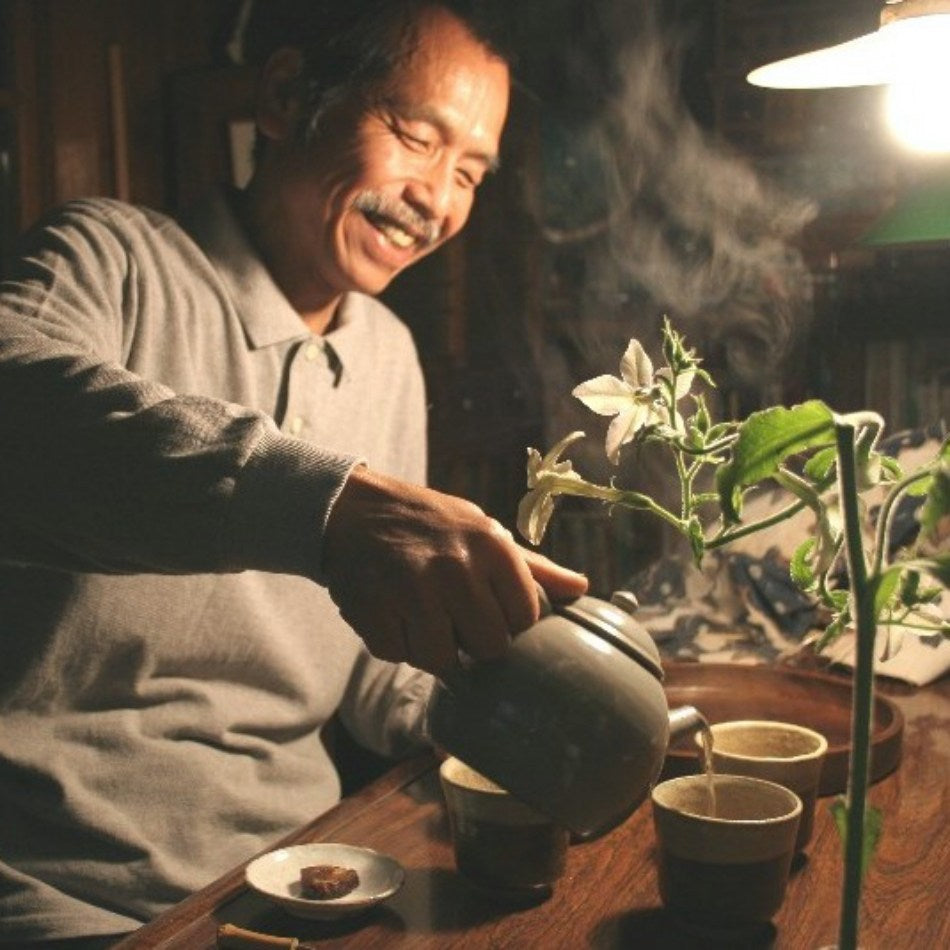
There is a book that I am reading at the moment and I can not put it down. A different kind of luxury is one of the most thought-provoking books that I have read so far about the importance of simple living. It is profound yet simple and with every turn of the page it inspires and enchants through the 11 prolific individuals interviewed in the book.
For a great read check out “A Different Kind of Luxury: Japanese Lessons in Simple Living and Inner Abundance” written by Andy Couturier.
In a nutshell, this inspiring book shows us the path to living beautifully by simplifying, getting back to nature and optimising the abundance of time. It reminded me of the importance of having less and doing more. Or as Andy reminds us in his book “Why is it that so many people start to value money so much that they trade in most of the hours and years of their life in order to get it?”
“Simplicity is not about deprivation. Simplicity is about a greater appreciation for things that really matter.” - Anonymous
Couturier introduces us to 11 Japanese artists and farmers who have consciously chosen simple living by ways of a rural life of little money. They’ve resisted the cultural pressures to conform to lives with salaried jobs (something that is highly regarded in Japan), and have instead chosen lives grounded in nature, allowing them the space for their creativity to flourish and philosophic thoughts to deepen. Their lives are slow, but rich.
Couturier says, “Time is what we have in this life, and how we use it determines what our life is. Why is it that so many people start to value money so much that they trade in most of the hours and years of their life in order to get it?”
Gufu Watanabe, diarist, illustrator, farmer, botanist, and potter says, “It is important to me to be someone who has time . . . There’s a term we have in Japanese, furyu: the characters are ‘wind’ and ‘flow.’ Someone with furyu has time to write haiku, or can appreciate flowers, and they have space in their emotions to look at the moon or the stars. They’re not too busy working or making money. Those people who don’t have furyu are not full people.”
The people interviewed for this book often choose to do work manually rather than buy modern conveniences, because “convenience just speeds you up,” says Asha Amemiya, farmer, textile artist, author and illustrator. Couturier says, “A craftsperson’s job is half meditation, half creation. It takes creativity to design whatever you are working on, but it takes meditation to do it right. Making things with one’s own hands cultivates a certain generosity and openness of the heart. It nourishes that state of mind in the craftsperson themselves, which is intimately connected with an entire way of life.”
Most us are part of the rat race and are constantly trying to achieve something better. At the end of the day, we have tailored suits, hefty bank accounts and all modern luxuries, yet we lack the inner-peace. Our soul’s crave simple living for it is our natural state of being. Andy sheds light on how we could lead a more simple yet peaceful life by appreciating what we have. The 11 modern heroes in this book have turned their back on Japan’s frenzied lifestyle and have chosen to lead a life of self-sustainability. These heroes are common people who chose to live life differently; some of them have families whereas some other chose to live alone. They are creative and they earn their living through pottery, writing, paintings etc. Each of these individuals has once been a part of mainstream. The stories of these individuals are highly inspirational.
Here are some key lessons I took away about Simple Living from reading this beautiful book:
- Live slowly and richly: Reject the fast-paced lure of modern life and the money and illusion of security that comes with it. Most of us spend our lives rushing distractedly from one thing to the next. Take the time to appreciate and live a slow, rich life – no matter where you live. Have a deep sense of your life — filled with purpose, gratitude, and meaning. Daring to take the time to think and be in this world. Now that’s a luxury!
- Step off the treadmill of capitalism: Forget mass manufacturing and excessive consumerism, try your heart at craftsmanship, exploring spiritualism, sustainable farming, painting, and poetry.
- Choose to be mindfully connected to your surroundings: A quote I love from the book from one of the artists “Often I’ll go outside and just place my hands in the soil, even if there’s no work to do on it. When I am filled with worries, I do that and I can feel the energy of the mountains and of the trees.”
- Live more gently on the earth: When you can, choose to live lightly upon the earth, with as little money as possible, and with an abundance of time. Having time allows the heroes in the book to grow their own food, revel in the beauty of nature, pursue creative endeavors, and contemplate the meaning of life and death, and the mysteries of the universe.
- Marvel at history and find a newfound appreciation for the old and imperfect: As Ito says, “The good things of the past, that’s what we must preserve. They have passed through the hardships of history to become a tradition, and we who are alive today must treasure them, and take care of them for the future.”
Overall the book is filled with beautiful pictures, conversations and beautifully conveys the concept of self-reliance and simple living. It guides and inspires the reader to find their way to a more harmonious and well-balanced life, one that appreciates the beauty of nature and honours humans and relationships. This book provokes you to think about “what is most important in life?” With every word you read, you are left more inspired as you delve deeper into the lifestyle and principles of each of the eleven individuals mentioned in the book. They are a living example of how you can live a harmonious life by appreciating and valuing time and by aligning yourself to the beauty of nature.
Andy weaves magic with words and creates brilliant descriptions of the people, their lifestyle and Japan’s countryside. As a reader, you can relate to each individual listed in the book. Andy has chosen his subjects adeptly and has presented the subject wonderfully. Andy’s natural and simple style of writing allows the reader to travel with him, visually painting the experience and moment when he meets these iconic individuals. His writing lets you feel the essence of simple living.
It is a worthwhile read for those who want to break free from shackles of this competitive world and live a peaceful and contented life. The book does not ask you to shrug away modern amenities however it gently reminds you that by making these amenities a goal and priority within your life can hamper the quality of living. The book itself is a visual treat, with beautiful images of the Japanese countryside, profiled individuals and their creations. Andy’s writing leaves you refreshed. I will certainly be reading it again and again – especially when I get lost in the chaos of the modern world and need a reminder of what is truly important in life.
I’ll leave you with the words of Osamu Nakamura, woodblock artist, handmade bookbinder, cook and traveler: “Doing nothing all day — it’s difficult at first. Being busy is a habit, and a hard one to break”.


